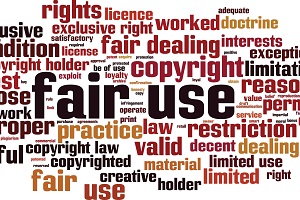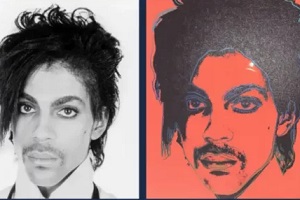By Eric D. Morton
We are often asked: what is fair use? Clients want to use a picture, graphic, photograph, or other work they did not create. We are asked whether changing a work by 20% or 80% or some other percentage is transformative enough to be considered Fair Use and not infringe on the copyrights of owner of the original work. The answer is “that depends”. Fair Use is problematic.
Fair Use is so problematic that the U.S. Supreme Court has taken a case involving artist Andy Warhol and the musician Prince (more on that below).

The first problem is that Fair Use is a defense to a claim of copyright infringement. If you are relying on it, you have been accused of (and maybe sued for) copyright infringement. You have used someone’s work, you’ve been caught, and now you trying to shield yourself from liability by claiming Fair Use. The second problem is that Fair Use is determined on a case by case basis. So, what constitutes Fair Use?
Copyright Act
Fair Use is defined in Section 107 of the U.S. Copyright Act. Section 107 states that the use of a copyrighted work is not infringement if is used for news, education, research, and commentary purposes. Section 107 goes on to state the fair use is otherwise determined using a four factor test that considers:
(1) the purpose and character of the use;
(2) the nature of the copyrighted work;
(3) the amount of the copyrighted work that is taken; and
(4) the effect of the use upon the potential market for the copyrighted work.
It’s clear looking at these factors that whether or not the use of someone else’s work is Fair Use will depend on the unique facts of each case. There is no formula. This what makes it difficult to determine whether nor using a particular work in a certain way for a commercial purpose is Fair Use.
Andy Warhol and Prince
The U.S. Supreme Court recently took up the case of The Andy Warhol Foundation for the Visual Arts, Inc. v. Goldsmith. The case involves a photograph taken of the musician Prince in 1981 by the photographer Lynn Goldsmith. In 1984, the magazine Vanity Fair purchased a license from Goldsmith to use the photograph as an “artist reference” – which is the use of the photograph by another artist to create a work to be included in Vanity Fair. The license was for that one time purpose. Vanity Fair hired Andy Warhol to create an image that was used in an edition of the magazine.
 In 2016, Prince died. Conde Nast, which owns Vanity Fair, contacted The Andy Warhol Foundation about using the Warhol image. However, Warhol had created another 15 images based on the same photograph. Conde Nast used an image for a Prince tribute magazine. Goldsmith learned of the magazine and the Warhol images and claimed infringement by The Andy Warhol Foundation, the owner of the Prince images (Warhol is long deceased). The Warhol Foundation claimed Fair Use. The U.S. District Judge hearing the case ruled in favor of The Warhol Foundation. On appeal, the Second Circuit Court of Appeals ruled for Goldsmith. The U.S. Supreme Court agreed to hear the case which will probably be decided next year.
In 2016, Prince died. Conde Nast, which owns Vanity Fair, contacted The Andy Warhol Foundation about using the Warhol image. However, Warhol had created another 15 images based on the same photograph. Conde Nast used an image for a Prince tribute magazine. Goldsmith learned of the magazine and the Warhol images and claimed infringement by The Andy Warhol Foundation, the owner of the Prince images (Warhol is long deceased). The Warhol Foundation claimed Fair Use. The U.S. District Judge hearing the case ruled in favor of The Warhol Foundation. On appeal, the Second Circuit Court of Appeals ruled for Goldsmith. The U.S. Supreme Court agreed to hear the case which will probably be decided next year.
The take away, particularly from the Warhol/Prince case, is that what is fair use in a commercial setting is difficult to determine. The judges determining that case differed. The Supreme Court took the case because Federal courts have issued differing opinions on what constitutes Fair Use.
Using copyright protected works is a chancy business. If you are tempted to use a copyright protected work and think you can use it as Fair Use, talk to an attorney. Or, better yet, don’t use it at all.
Eric D. Morton is the principal attorney of Clear Sky Law Group, P.C. He can be reached at emorton@clearskylaw.com, 760-722-6582, and 510-556-0367.


